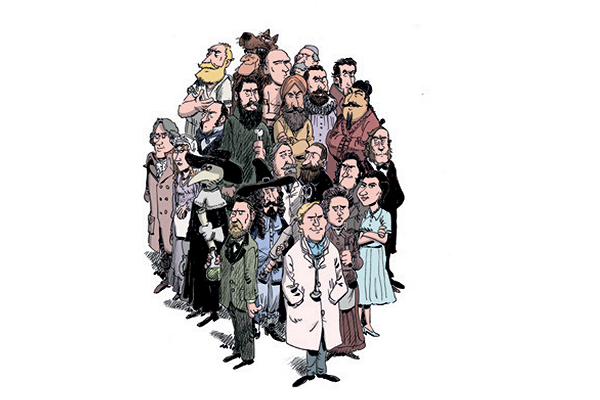Written by Jean-Noël Fabiani, with art by Philippe Bercovici; Medicine: A Graphic History is a lot like a textbook. Rather, it is what I wish textbooks had been like when I was younger; an unconventional comic by some standards. The book is a journey through time – from the advent of medicine in mankind’s earliest days, to the practices of the modern day. Accompanying the slew of information are hundreds of panels full of cartoonish illustrations and visual aides.
Health seems more and more important than ever these days. That is to say, I think many of us often take for granted how incredible the science behind our modern medical practice is—especially how exactly we got to this point. Medicine is extensive in its breakdown. The book has 21 chapters and over 200 pages; split up by time period, field of medicine, and specific advancements.
Throughout the readthrough, I encountered an immense amount of information packed into one single book. The illustrations are also very important. They provide reference points for the time period and setting as we rapidly advance through history. Illustrations work in tandem with the text. Together, they elucidate often humorous visual play-by-play of how certain events occurred.
The art itself is simple but enjoyable, and absolutely nothing to scoff at; lively, stylized, and most importantly, helpful. It’s remarkable just how much Medicine manages to put on display extensive history all over the world, usually adding a bit of humor too, especially in regards to the stranger ideas and practices of more ancient times. As a result, the book remains grounded, colorful, and fresh.
So much of the information contained in the book is as silly or strange as it is fascinating. One of my favorite fun facts is the story of the now-always-used rubber surgical gloves. Invented for a cocaine addict surgeon; he requested they be made due to the scrub nurse he was in love with having an allergic reaction to the hand-disinfectant used in the bare-handed surgeries of the time. And he wanted to keep working with her.
Little specific, odd, yet insanely important vignettes such as these break up the chapters. They provide smaller narratives among the mass amount of text to keep the flow going. The book isn’t just a random assortment of 200 pages of medicinal facts and illustrations; it never feels like they missed or glossed over any facet of history; each new section keeps things fresh. The chapter on experimental medicine, for example – in addition to being very interesting – is told mostly through narration from the characters instead of the usual third person speech bubbles.
Whether you’re a medical student, someone with a passing interest in the science of medicine, or you just want to learn a bunch of fun facts, I think it would be worth giving this graphic novel a shot.
Medicine: A Graphic History is available for purchase on Amazon, or you can check its full details out on SelfMadeHero. Know any fun medical facts? Sound off in the comments or send us your thoughts on Facebook or Twitter!

